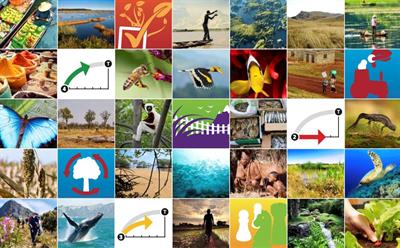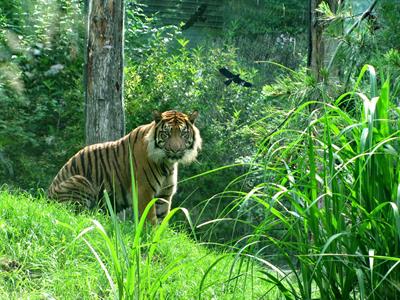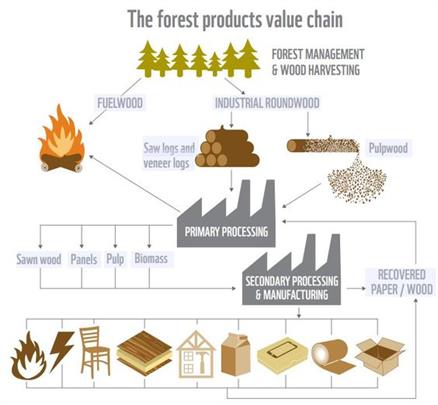
PUMPA - SMART LEARNING
எங்கள் ஆசிரியர்களுடன் 1-ஆன்-1 ஆலோசனை நேரத்தைப் பெறுங்கள். டாப்பர் ஆவதற்கு நாங்கள் பயிற்சி அளிப்போம்
Book Free DemoEarth is filled with many species of plants and animals. Around 70 −100 \ lakh species are present on the earth. India has nearly 45,000 plant species, 2000 species of birds, 5000 species of insects, 420 species of reptiles, 800 species of mammals.
All these animals and plants together are called biodiversity. Biodiversity - "Bio" means life, and "diversity" means different or varieties. A variety of organisms are essential for humanity's survival and well being.
Biological diversity is the variety of life forms on the earth and the interdependence of all living things.

Biodiversity
One measure of the biodiversity of an area is the number of species found in a given place. However, the diversity of life forms (bacteria, fungi, ferns, flowering plants, nematodes, insects, birds, reptiles, and so on) is also crucial.
India is filled and is full of forests and wildlife. Forests form a buffer for the earth to protect life forms. They are an essential part of our environment since they are a habitat for microorganisms, flowering plants, shrubs, climbers, and dense trees and provide a wide habitat for wild animals. Due to the wide range of life forms and genetic diversity present in forests, they are considered "biodiversity hot spots".

Forests providing habitat for wild animals
Forests contribute to the economic development of our country. They are essential for human life because they provide a diverse range of renewable natural resources. Forests are renewable resources covering nearly 30\% of the world land surface.
Role of Forests:
Forests play a crucial role in the welfare of people and our environment. Forests produce oxygen through photosynthesis and maintain the carbon dioxide levels present in the atmosphere. Thus, they act as a carbon sink.
Forests also regulate climatic conditions, control the surface water runoff, protects the soil from soil erosion, increase rainfall, reduce global warming, prevents natural hazards such as floods and landslides.
They protect wildlife, maintain thewater cycle, fulfil our freshwater requirements, and act as catchments for water conservation. Forests produce various valuable things besides providing ecological balance of the land area. Some of the important products produced in the forests are:
i. Wood is required for timber for making furniture, wooden crates for packing, paper, boats, firewoods in developing countries.
ii. Food and spices such as dried fruits (almond, walnut, cashew, etc.) and spices (cloves, cinnamon, cardamon, etc.).
iii. Tannins, Gums, Resins, and Dyes: Tannins are used to manufacture ink and leather polish, gums in the manufacture of adhesives, resins in the manufacture of paint, and dyes such as hematoxylin in the staining of tissues in anatomy research.
iv. Drugs: Drugs such as quinine and aconite.
v. Other products such as rubber, cork, honey, fodder, fibre, and camphor.

Forest products
Forests are a major factor of environmental concern.
In the previous chapter, Our environment, we looked at the ecological food web, how all living forms are interconnected, and how one organism's well-being depends on the other. Thus, one of the primary goals of conserving forests is to try and protect the biodiversity that humans have inherited. Experiments and field investigations indicate that a loss of diversity could result in the loss of ecological stability.